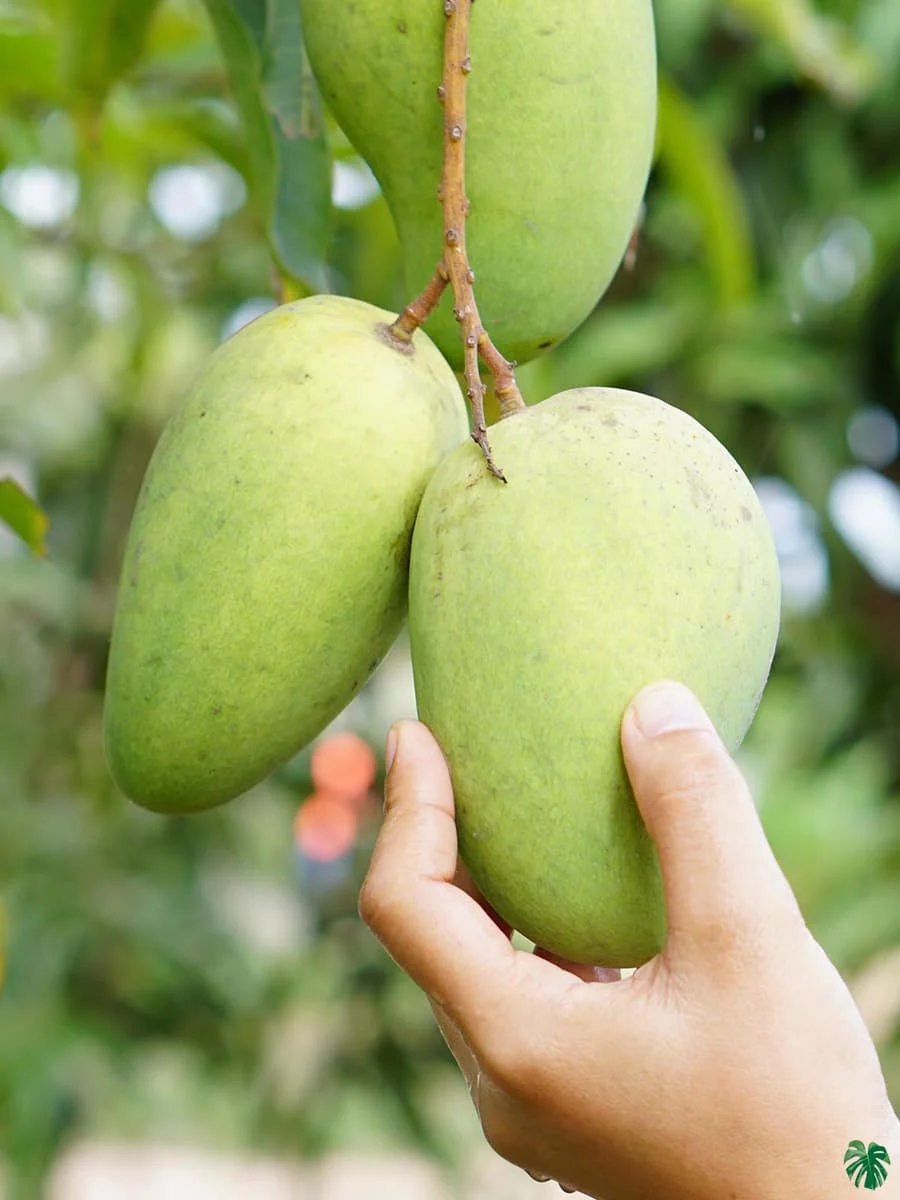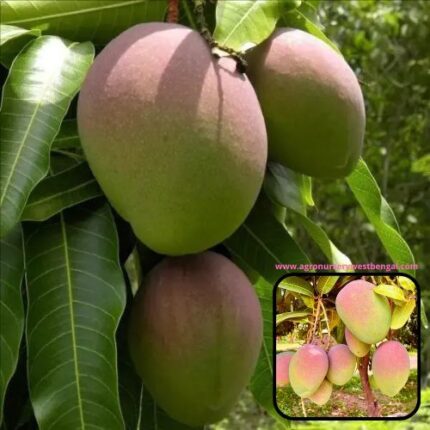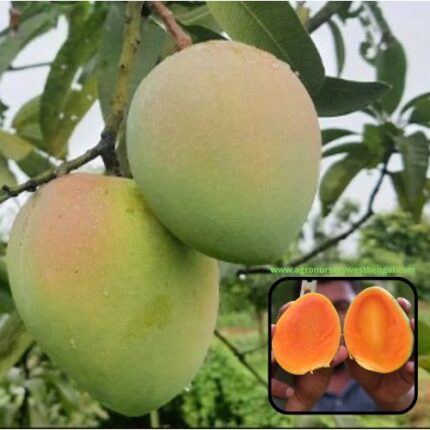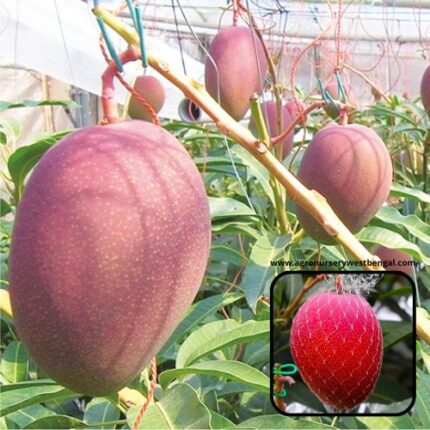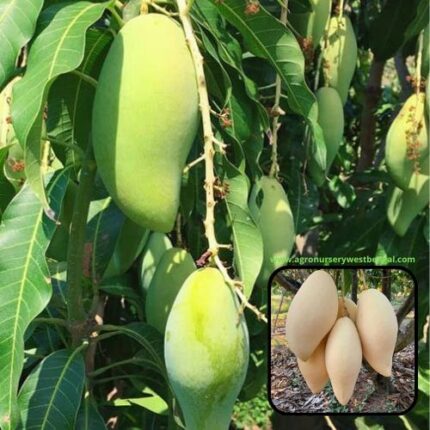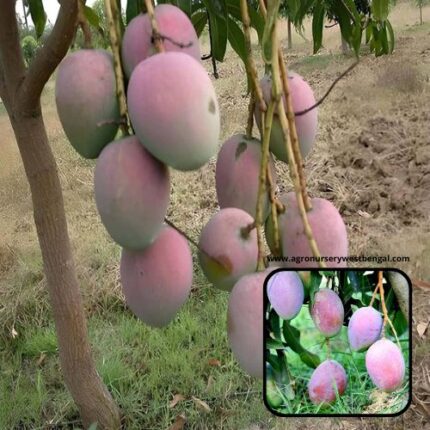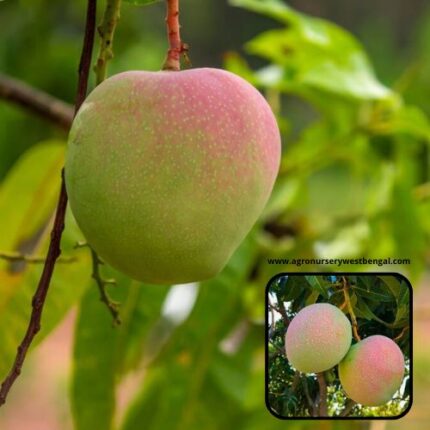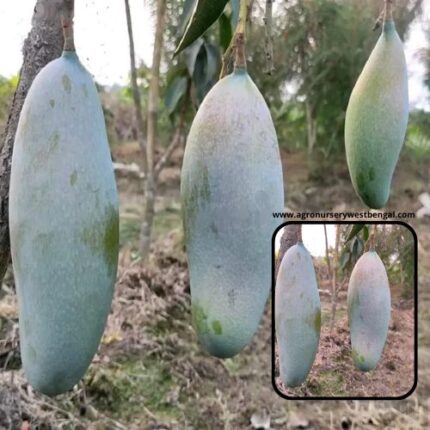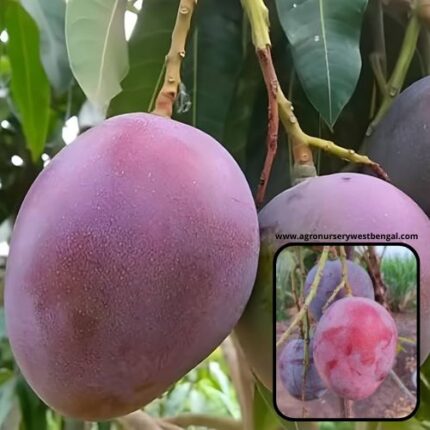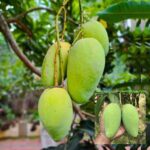

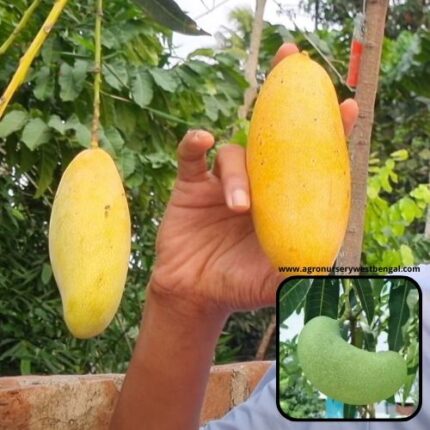
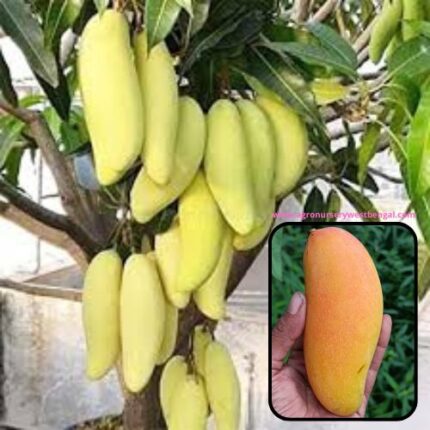
All time katimon mango plants
₹1,199 Original price was: ₹1,199.₹549Current price is: ₹549.
The “All-Time Katimon” mango, often simply referred to as Katimon, is a highly sought-after mango variety, particularly popular in Southeast Asia (where it originated in Thailand) and increasingly in India and Bangladesh. Its most distinguishing feature, and the reason for the “All-Time” in its name, is its ability to produce fruit multiple times a year, sometimes almost continuously, rather than just in a single seasonal flush like most traditional mangoes.
Here’s a detailed description of the Katimon mango:
Origin and Cultivation:
- Origin: Native to Thailand, the Katimon mango is a popular variety cultivated across Southeast Asia.
- Growing Regions: Widely grown in Thailand, and gaining significant popularity and commercial cultivation in India (especially West Bengal, where I am currently located, and parts of the South) and Bangladesh. Its adaptability to various tropical and subtropical climates contributes to its spread.
- Tree Characteristics: Katimon mango trees are known for being vigorous growers with a dense canopy of dark green foliage. They can reach a height of 15-25 feet when fully grown, though they can be managed to a smaller size, making them suitable for home gardens and even large pots. They are relatively low maintenance and are often lauded for their disease resistance.
- Fruiting Habit (“All-Time” / Baramasi): This is the most crucial aspect. Unlike most mangoes that fruit once a year, Katimon can produce fruit 2-3 times a year, and sometimes even continuously, depending on the climatic conditions and proper care. This makes it highly valuable for commercial growers and home gardeners who desire a year-round supply of fresh mangoes. Fruiting tends to be particularly abundant during the monsoon season in many regions.
Fruit Characteristics:
- Size and Shape: Medium-sized fruit, typically weighing between 200 to 350 grams. It generally has an oval or oblong shape.
- Skin: Thin and smooth. The skin is typically green, even when ripe, but often develops an attractive red or orange blush on the side exposed to the sun. This can sometimes lead to confusion for those expecting a fully yellow mango, but the color change is subtle.
- Flesh (Pulp):
- Color: Vibrant deep golden yellow to orange.
- Texture: Exceptionally juicy, tender, creamy, and completely fiberless. This smooth, melting texture is a major draw for this variety.
- Pulp Content: High pulp content.
- Taste and Aroma:
- Sweetness: Known for its excellent sweetness. It’s often described as being sweeter than other popular varieties like Amrapali.
- Flavor Profile: It offers a rich, sweet flavor with a hint of tanginess, providing a well-balanced and aromatic taste experience. Some sources suggest it’s even sweet when still green.
- Aroma: Possesses a pleasant and distinctively aromatic fragrance.
Season and Availability:
- As an “all-time” or “baramasi” variety, Katimon mangoes are available for extended periods, usually producing fruit 2 to 3 times a year, and often having some fruits on the tree at any given time. This makes them a popular choice for off-season sales where competition is lower and prices are often higher.
Culinary Uses:
- Its exquisite taste, high pulp content, and fiberless nature make Katimon mangoes perfect for:
- Fresh eating: The most popular way to enjoy this delicious fruit.
- Juices and Smoothies: Blends effortlessly into refreshing beverages.
- Desserts: Excellent for preparing ice creams, sorbets, puddings, and other sweet treats.
- While primarily enjoyed ripe, its sweet-tangy profile might also lend itself to certain raw preparations like chutneys.
Other Noteworthy Points:
- Hybrid Characteristics: It is sometimes mentioned that Katimon mangoes are a hybrid between the Thai Nam Dok Mai and the Indian Amrapali, which would contribute to its distinctive characteristics.
- Early Fruiting: Grafted Katimon plants can start bearing fruit relatively early, often within 1.5 to 2 years of planting.
In summary, the Katimon mango is celebrated for its incredible ability to fruit multiple times a year, offering a continuous supply of its deliciously sweet, fiberless, and aromatic golden-orange pulp. Its unique combination of year-round availability and excellent flavor makes it a highly desirable mango for both growers and consumers


